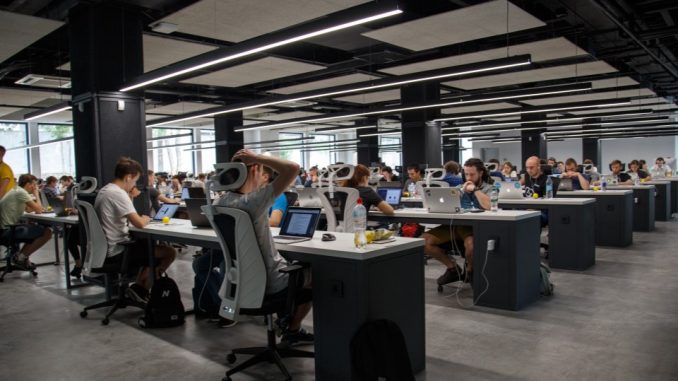
Our economy is in the early stages of a major transition. For some time, automation has been pushing people out of the business of producing stuff (machines do it better, by and large). More recently, automation has started pushing people out of the business of managing information (turns out they are better at that, too.) What’s left for humans? Maybe one day we will be a global leisure class, enjoying the fruits of the machines’ labors. But what happens in the mean time? Are jobs going away or are they just changing?
Phil and Stephen review a collection of stories related one way or another to our eventual move from a scarcity / paycheck / drudgery economy to a post-scarcity, self-actualizing one.
The Future of Human Work Is Imagination, Creativity, and Strategy
…work that requires a high degree of imagination, creative analysis, and strategic thinking is harder to automate. As McKinsey put it in a recent report: “The hardest activities to automate with currently available technologies are those that involve managing and developing people (9 percent automation potential) or that apply expertise to decision making, planning, or creative work (18 percent).” Computers are great at optimizing, but not so great at goal-setting. Or even using common sense.
Moreover, the report found that there is a growing range of new job opportunities in the fields of big data analysis, decision support analysts, remote-control vehicle operators, customer experience experts, personalized preventative health helpers, and online chaperones (“managing online risks such as identify theft, reputational damage, social media bullying and harassment, and internet fraud”). Such jobs may not be in your current industrial domain. But there may be other ways for you to view this moment as the perfect time to rethink the shape and character of your workforce. Such new thinking will generate a whole new human resource development agenda, one quite probably emphasizing those innate human capacities that can provide a renewed strategy for success that is both technological and human.
Craft Beer Is the Strangest, Happiest Economic Story in America
But in the last decade, something strange and extraordinary has happened. Between 2008 and 2016, the number of brewery establishments expanded by a factor of six, and the number of brewery workers grew by 120 percent. Yes, a 200-year-old industry has sextupled its establishments and more than doubled its workforce in less than a decade. Even more incredibly, this has happened during a time when U.S. beer consumption declined.
How the Science of Decision-Making Will Help Us Make Better Strategic Choices
Heuristics and biases are very topical these days, thanks in part to Michael Lewis’s fantastic book, The Undoing Project, which is the story of the groundbreaking work that Nobel Prize winner Danny Kahneman and Amos Tversky did in the psychology and biases of human decision-making. Their work gave rise to the whole new field of behavioral economics.
For example, they ask, “How much would you spend to buy A versus B?” Or, “If I offered you X dollars for this thing that you have, would you take it or would you say no?” So, it’s trying to look at human decision-making in a format that’s easy to understand and quantify within a laboratory setting.
Now you bring neuroscience into that. You can have people doing those same kinds of tasks—making those kinds of semi-real-world decisions—in a brain scanner, and we can now start to understand what’s going on in the brain while people are making decisions. You can ask questions like, “Can I look at the signals in someone’s brain and predict what decision they’re going to make?” That can help us build a model of decision-making.
I think in another 10 or 15 years, we’re probably going to have really rich models of how we actually make decisions and what’s going on in the brain to support them.
New study reveals why some people are more creative than others
Psychology and neuroscience researchers have started to identify thinking processes and brain regions involved with creativity. Recent evidence suggests that creativity involves a complex interplay between spontaneous and controlled thinking – the ability to both spontaneously brainstorm ideas and deliberately evaluate them to determine whether they’ll actually work.
Future research is needed to determine whether these networks are malleable or relatively fixed. For example, does taking drawing classes lead to greater connectivity within these brain networks? Is it possible to boost general creative thinking ability by modifying network connections?
For now, these questions remain unanswered. As researchers, we just need to engage our own creative networks to figure out how to answer them.
WT 395-707
Photo by Alex Kotliarskyi on Unsplash